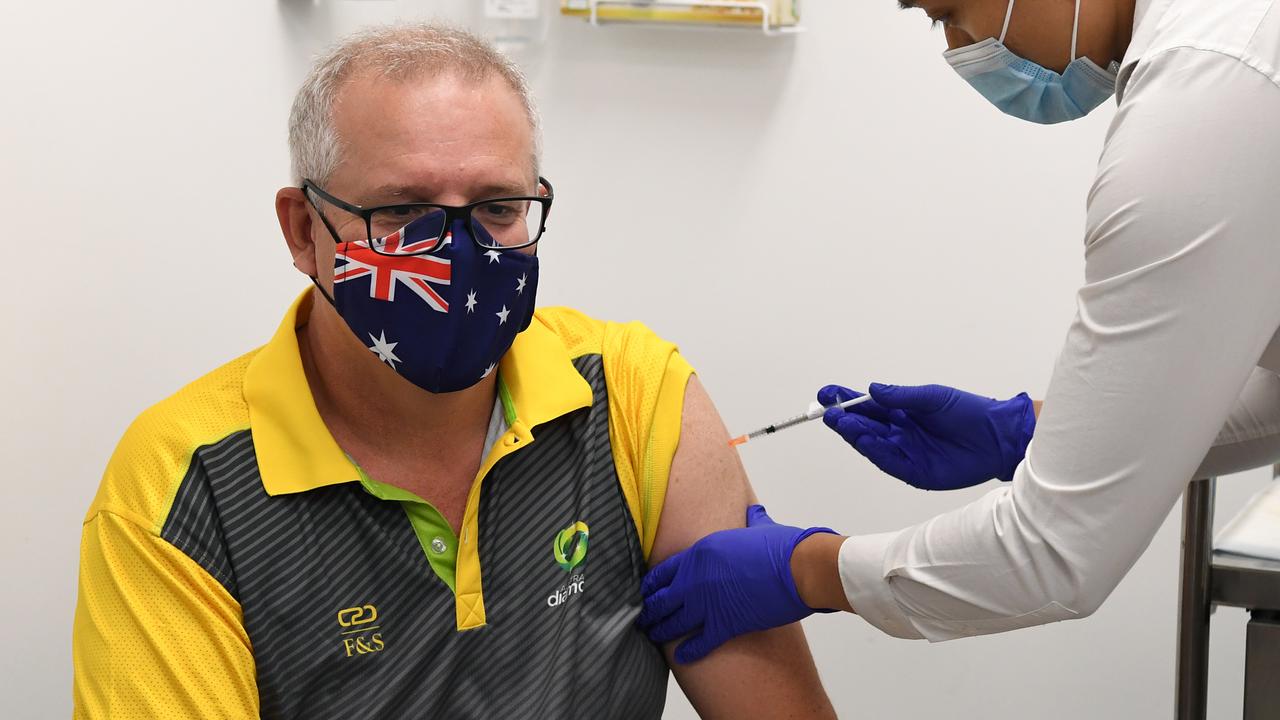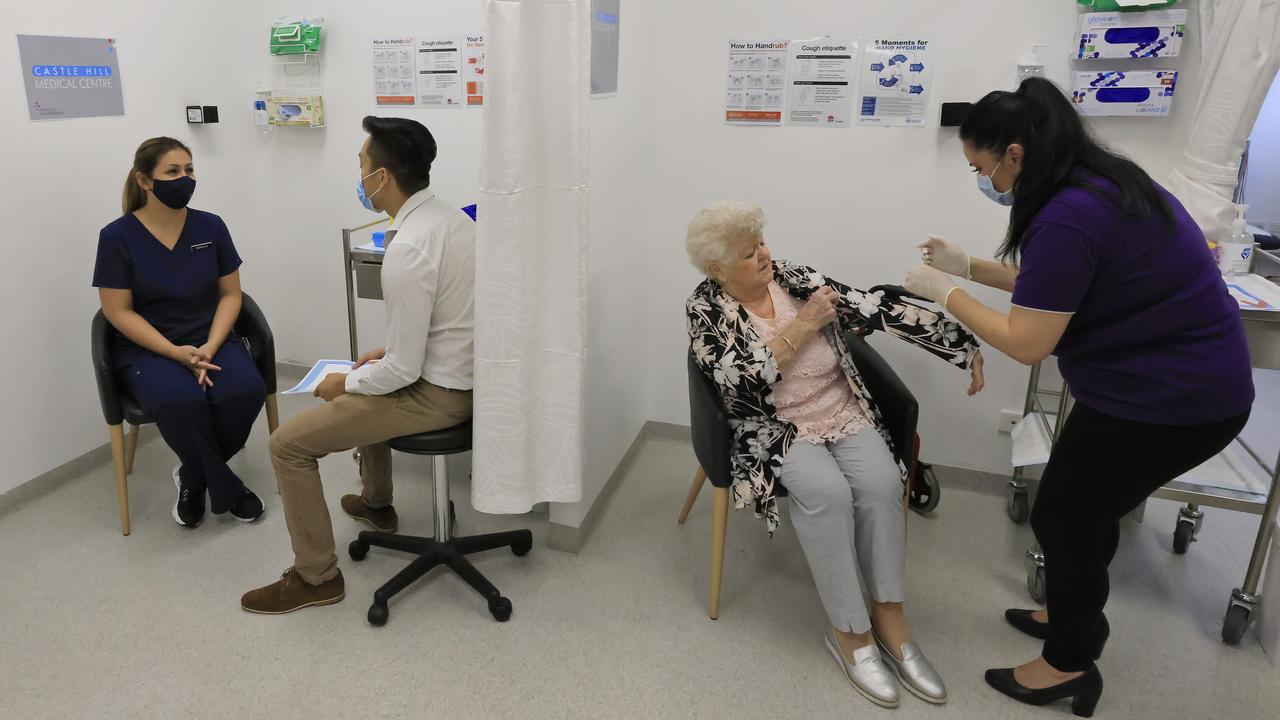COVID vaccine queue calculator estimates date when Australians are likely to get their jab
All Australians were expected to be vaccinated by October, but a new vaccine queue calculator suggests we could be in for a long wait.
A researcher has developed a COVID calculator that provides people with an estimated date for when they will get their vaccination.
The Omni Calculator’s Vaccine Queue Calculator for Australia, gives people an approximate date for their jab based on the number of people getting vaccinated every week, as well as their age and profession.
Interestingly, it highlights questions about whether the Federal Government’s schedule to have all adults vaccinated by October is achievable.
The Omni calculator, developed by Dr Steven Wooding, a web content developer based in the UK with a background in physics, programming and research, has used a figure of 500,000 vaccinations a week to come up with the estimates, although this is not based on official figures. The figure can be changed by users if they wish.
Prime Minister Scott Morrison said in January he hoped Australia’s program would deliver the jab to about 80,000 people a week and that four million people were expected to be vaccinated by the end of March.
The first Aussies to receive the COVID-19 jab will be frontline healthcare workers, quarantine and border workers, aged care and disability care staff and aged care and disability care residents.
They are included in Phase 1a of the rollout, covering about 678,000 people over six weeks. It was predicted up to 60,000 people would be vaccinated this week.
The next group - Phase 1b - is expected to include about 6.1 million people and include people aged 70 and over, other healthcare workers, Aboriginal and Torres Strait Islander people aged 55 and over, people with a disability or underlying medical condition and critical and high-risk workers, such as emergency services, defence personnel and meat processing staff.
Vaccination numbers are expected to ramp up but authorities have not yet revealed what Australia’s peak capacity will be.
Health Minister Greg Hunt told reporters on February 15 he expected four million Australians would be vaccinated by the early April.
Once the AstraZeneca vaccine becomes available in March, Mr Hunt said around one million doses per week would be available to Australians.
According to the Omni calculator, if one million doses were delivered every week, an adult who is not among the priority groups (included among the Phase 2b rollout) would expect to get their first jab between July 13 and September 19.
But if only 500,000 per week were being vaccinated, they would not get their jab until between November 25 and April 9, 2022.
News.com.au’s Our Best Shot campaign answers your questions about the COVID-19 vaccine roll out.
We’ll debunk myths about vaccines, answer your concerns about the jab and tell you when you can get the COVID-19 vaccine.
Other experts have suggested Australia would need to be vaccinating a staggering 200,000 people a day (1 million doses across a five-day week) in order to reach its target of having all adults vaccinated by October.
Preliminary research uploaded as a preprint manuscript this month, which is still awaiting peer review, noted the “considerable logistical challenges” in meeting Australia’s target.
Dr Mark Hanly, an applied social statistician at the University of NSW’s Centre for Big Data Research in Health, contributed to the research and noted the ambitiousness of the target in an article for The Conversation this month.
“200,000 vaccinations a day (1 million a week) is a truly furious pace,” Dr Hanly wrote.
“It’s possible, but will require dedicated large-scale vaccination sites capable of delivering thousands of doses a week in addition to the enthusiastic participation of general practices and community pharmacies countrywide.”
The Conversation article also analysed the vaccination programs of other countries to see whether it was feasible for Australia to vaccinate 1 million people a week.
RELATED: Australia’s ‘NASA-like’ COVID-19 vaccine plan

It standardised the countries according to population size and found if Australia wanted to vaccinate 1 million people a week, this translated to about 7700 doses per million population per day.
“This rate exceeds the best efforts of the majority of countries to date, including the United Kingdom and the United States, where the rate of vaccine administration has peaked at around 5800 and 4000 daily doses per million population respectively,” the article noted.
However, it said that Israel had achieved between 7000 and 20,000 daily doses throughout January.
“Several factors may have contributed to this success, including a young, largely urbanised population and a strong public health infrastructure,” the article said.
“Perhaps most important has been robust logistical planning, including coordination of delivery, ultra-cold-chain storage and staffing.”
In order for Australia to achieve its goal, Dr Hanly said vaccinations could not only be delivered through GPs and pharmacists.
It would require mass vaccination sites staffed by trained nurses that could vaccinate between 80-100 people per hour.
RELATED: Should you wait for a better vaccine?

“A similar approach in the UK has seen conference centres, sports stadiums, churches and mosques all co-opted as mass vaccination hubs, to great effect,” the article noted.
“A complementary approach would be to set up drive-through vaccine clinics similar to the model of drive-through testing sites.”
Australia began its coronavirus vaccine program ahead of schedule on Sunday, February 21, with the Prime Minister among the first in the country to get the Pfizer vaccine.
The first phase of the vaccination rollout will see frontline healthcare workers and those in border protection, quarantine workers, and aged care and disability care residents and staff, get the jab.
They will be followed by those aged over 70, immuno-compromised, Indigenous Australians over 55 and emergency service workers.
Phase 2a will see those over 50, critical workers and Indigenous Australians younger than 50 get vaccinated, before the balance of the adult population gets the jab as part of phase 2b.
Subject the clinical trials, the third phase would involve children.





